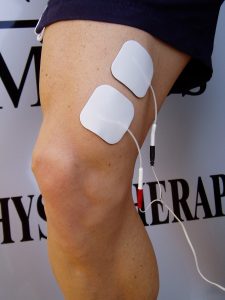
As discussed in our previous post, the rate of ACL surgery in Australia are on the rise. We are also performing the most ACL reconstructions per person than any other country in the world. Alarmingly though, the incidence of secondary ACL repairs is rising at a greater rate than primary repairs! Why is this so? Part of the reason may be due to the quality of rehabilitation and/or the decision-making process regarding return to sport (RTS).
So, what does a high-quality rehabilitation program comprise of, and what needs to be considered when making a return to sport?
An ACL rehabilitation program should be individualised. The stage of healing, current impairments and the individual’s goals must be considered. A quality program should be broken into phases with the athlete working towards specific goals within each phase before progressing to the next phase. The athlete should be guided by their physiotherapist to restore normal joint range of motion, muscle strength, balance and proprioception (awareness), landing mechanics, speed, power and agility. Then, the athlete must prepare for returning to sport. During this last phase of rehab, it is very important that the athlete attempts progressively harder sport-specific exercise and develops confidence in the tasks they will be required to do in their particular sport. This process should be guided by a physiotherapist who can take specific measurements to determine progression of rehab through the various phases.
Deciding when to return to sport can be difficult. In 2016, a meeting of world experts in injury management developed a consensus statement on returning to sport. One of the key findings from this conference was that the time to RTS varies among individuals, unrelated to the type and severity of injury. While time alone is not a reliable indicator of readiness to return to sport, it has been found that the likelihood of re-injury is reduced by 51% for each month a return to sport is delayed from 6 months until 9 months post-surgery (Grindem 2016).
So while delaying a RTS until at least 9 months following surgery is wise, decisions should be made based on information from a battery of tests. These tests should include not only physical tests such as strength, power and agility, but also assessment of psychological readiness and confidence. One particular study found that individuals who did not successfully complete the outcome measure at the end of their rehabilitation before returning to sport were 4x more likely to re-rupture their ACL (Kyritsis 2016).
If you’ve injured your knee and want help to ensure you optimise your recovery and avoid reinjury, contact us on 02 49216879 or admin@numovesphysiotherapy.com.au.
Please find the articles referred to in this post below:
- Likelihood of ACL graft rupture: not meeting six clinical discharge criteria before return to sport is associated with a four times greater risk of rupture (Kyritsis, 2016)
- 2016 Consensus statement on return to sport from the First World Congress in Sports Physical Therapy, Bern (Griffin, 2016)
- Simple decision rules can reduce reinjury risk by 84% after ACL reconstruction: The Delaware-Oslo ACL cohort study (Grindem, 2016)
